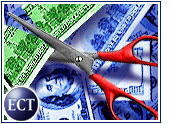
As the 2000 holidays fade into the background, with e-commerce neither falling on its face nor proving that its growing pains are history, one might think that the industry is ready to take a step back and regroup for the future.
However, iflast year’s post-holiday business was any indication, e-commerce is justgetting started.
In the first quarter of 2000, rather than pulling back, e-commerce gained momentum following the winter holidays. Any sort of reversal of that pattern in 2001 would make headlines.
As a result, e-tailers over the coming weeks will be out to demonstrate their sales and customer service mettle, in order to prove that they are in for the long haul — and deserving of the commitment of consumers and investors alike.
The Improvement Curve
The question for e-commerce as a whole, then, is not whether it will grow following the 2000 holidays, but how much.
For the first quarter of 2001, eMarketer predicted that Net sales will total $13.5 billion, an 8 percent increase over the $12.5 billion in sales recorded during the fourth quarter of 2000. That percentage increase would be less than the 14 percent e-commerce sales improved over the same period a year ago.
Last year, other measurement firms also found that there were no post-holiday blues for e-commerce in early 2000. According to the NRF/Forrester Research Index, online spending for January 2000 totaled US$2.8 billion — more than half of what consumers spent during the 1999 holiday season.
Additionally, Harris Interactive reported that the number of consumers buying on the Web rose to 26.8 million in Q1 2000, up from 23.3 million during the fourth quarter of 1999.
Winter’s Dog Days
However, sectors such as clothing, electronics and toys — all of which suffered drops in sales in the months following the 1999 holidays — need to show improvement.
“These drops are not just a function of decreased post-holiday demand,” Harris director of e-commerce research Lori Iventosch-James said last year. “They illustrate that online retailers face the same challenges traditional retailers face in sustaining themselves at other times of the year.”
Iventosch-James pointed out that one of the biggest stories of the first quarter of 2000 was that online auction house eBay showed strength in several categories, including electronics and toys. It was at that point, she said, that consumers began “thinking of eBay as a full-service e-commerce site.”
E-tail Where the Heart Is
Anyone searching for a potential microcosm of the coming weeks need look no further than Valentine’s Day. While sales were positive February 14th, some areas showed surprising weakness.
Nielsen//NetRatings compared traffic in the two weeks leading up to Valentine’s Day to traffic during normal shopping periods, and found that despite prominent promotions, online superstores such as Amazon, Buy.com, eBay and CDNow saw no improvement in their typical site traffic. On the other hand, traffic to niche sites soared.
Pre-Valentine’s Day sales of jewelry online will also be watched in 2001 to see if some surprising behavior becomes a trend. Last year, jewelry sites surprised NetRatings with a drop in traffic of 38 percent in the two weeks before Valentine’s Day.
Conversely, gift sites saw an 88 percent traffic increase in the same period, according to NetRatings, with RedEnvelope posting a 123 percent jump in sales. Traffic to flowers and greeting card sites improved by about 30 percent, duein large part to a 71 percent jump for 1800Flowers.com.
Delivering on Promises
However, as with any big shopping day, e-tailers need to prepare for the unexpected during Valentine’s Day — especially considering that consumers are said to put off making Valentine’s Day purchases more than they do with December holiday gifts.
In January 2000, ProFlowers.com chief analytical officer Mark Irace told the E-Commerce Times that his company was “100 percent confident” it could handle anticipated orders. Irace added that if demand were unexpectedly heavy, the company “would not take orders it could not deliver.”
However, Internet performance monitoring firm Keynote found that ProFlowers failed to deliver one of three test orders that were placed. Furthermore, 1800Flowers.com, which also said it was certain of on-time delivery, failed to deliver two of its three test orders.
Of course, preparation goes beyond having the customer service and UPS stars aligned. Coincidentally, perhaps the year’s most severe denial-of-service (DoS) attacks came right before Valentine’s Day, affecting sites as prominent as Yahoo!, Amazon, Buy.com and eBay.
The Long Road
Mix all the potential surprises in with the spending hesitancy that could easily strike U.S. consumers amid fears of an economic slowdown, and it is clear that nothing is etched in stone for e-commerce following the holidays.
So, although the coming weeks figure to be more than a status report for e-commerce than a make-or-break test, there remains plenty of reason to pay attention. After all, e-commerce needs to find ways to sustain year-round business, and next Christmas is a long way away.![]()




















































Social Media
See all Social Media